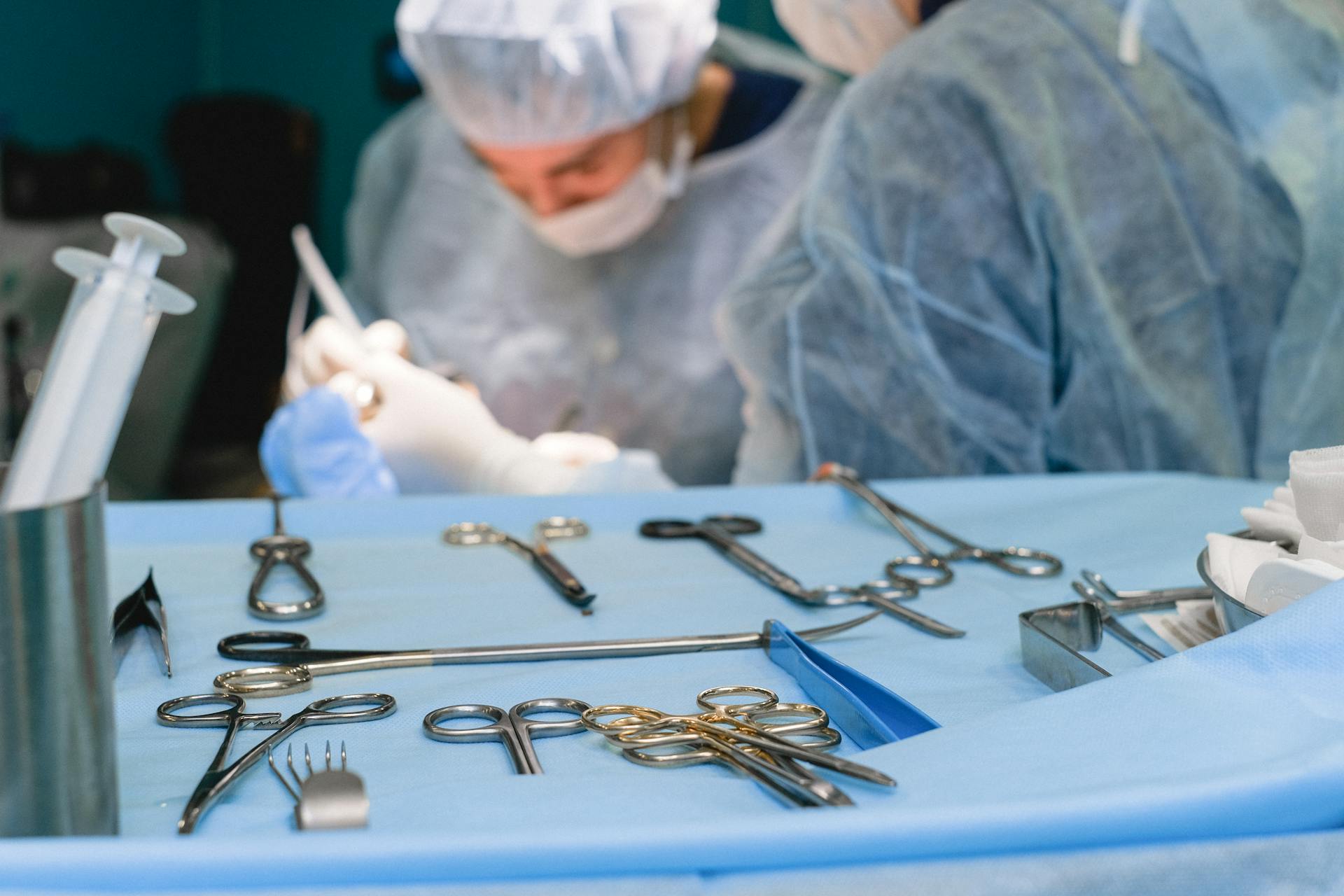
Cataracts are a common condition that affects millions of Americans. Symptoms of cataracts can include blurry vision, trouble seeing at night, and halos around lights. If you suspect you have cataracts, it’s important to see an eye doctor for a comprehensive eye exam.
Cataracts occur when the clear lens of your eye becomes cloudy. This can happen over time as you age. People with diabetes or other health conditions are at an increased risk for developing cataracts.
Symptoms of cataracts can include:
Blurry vision
Trouble seeing at night
Halos around lights
Changes in the color of your vision
If you have any of these symptoms, it’s important to see an eye doctor for a comprehensive eye exam. An eye doctor can determine if you have cataracts and develop a treatment plan.
Treatment for cataracts usually involves surgery to remove the clouded lens and replace it with a clear artificial lens. Cataract surgery is safe and effective, and it’s the only way to treat cataracts.
If you have cataracts, don’t wait to get treatment. Cataracts can worsen over time, so it’s important to get them treated as soon as possible. Early treatment can help you avoid vision problems and preserve your vision.
Discover more: How Do You Know When Your Cataracts Are Ripe?
How do cataracts develop?
Cataracts are a common condition that develops as people age. They are a clouding of the eye’s natural lens, which lies behind the iris and the pupil. Cataracts usually form slowly and painlessly, and initially do not affect vision. However, over time, they will cause the lens to become increasingly opaque, leading to vision problems.
There are two main types of cataracts: nuclear cataracts, which form in the center of the lens, and cortical cataracts, which form in the lens’ periphery. Nuclear cataracts tend to develop slowly and initially have little effect on vision. Cortical cataracts, on the other hand, tend to develop rapidly and can cause significant vision problems.
There are several risk factors for developing cataracts, including age, diabetes, smoking, prolonged exposure to ultraviolet (UV) light, and family history. People over the age of 60 are most at risk for developing cataracts. Those with diabetes or a family history of cataracts are also at an increased risk. Smoking and exposure to UV light can also contribute to the development of cataracts.
Cataract surgery is the only way to treat cataracts. During surgery, the cloudy lens is removed and replaced with an artificial lens. The surgery is usually safe and effective, and Vision after surgery usually improves significantly.
Additional reading: Optometrist Diagnose Cataracts
How do you know when cataracts are ripe?
Cataracts are ripe when the person experiences decreased vision. The person may say that objects look blurry, colors appear dull, and it is difficult to see at night.
How can cataracts be prevented?
There are several ways to prevent cataracts, or at least delay their onset. One is to reduce your exposure to ultraviolet (UV) light.
Wear sunglasses that block both UVA and UVB rays when you are outdoors. And, when possible, stay in the shade.
You can also help protect your eyes from cataracts by not smoking and by eating a healthy diet.
Foods that are high in antioxidants, such as vitamins C and E, can help reduce your risk of cataracts. Good sources of these vitamins include citrus fruits, dark leafy greens, and fish.
Finally, be sure to have regular eye exams. If you have a family history of cataracts, you may need to start having exams more frequently.
Discover more: Can Cataracts Cause Headaches and Dizziness?
How are cataracts treated?
Cataracts are a common condition that causes clouding of the eye’s lens. Over time, this clouding may become thicker and denser, making it more difficult to see. While cataracts can occur at any age, they are most common in older adults. In fact, by age 80, more than half of all Americans have developed cataracts.
There are several ways to treat cataracts, depending on the severity of the condition. In some cases, simply wearing corrective lenses, such as eyeglasses or contact lenses, may be all that is needed to improve vision. For more severe cataracts, surgery may be necessary.
Cataract surgery is a fairly quick and straightforward procedure that is usually performed on an outpatient basis. During surgery, the cloudy lens is removed and replaced with a clear artificial lens. Most people who have cataract surgery experience improved vision afterwards.
Cataracts are a common condition that can cause clouding of the eye’s lens. Cataracts can occur at any age, but they are most common in older adults. There are several ways to treat cataracts, depending on the severity of the condition. In some cases, simply wearing corrective lenses, such as eyeglasses or contact lenses, may be all that is needed to improve vision. For more severe cataracts, surgery may be necessary. Cataract surgery is a fairly quick and straightforward procedure that is usually performed on an outpatient basis. During surgery, the cloudy lens is removed and replaced with a clear artificial lens. Most people who have cataract surgery experience improved vision afterwards.
Additional reading: Cataract Surgery
What is the prognosis for people with cataracts?
Cataracts are a common cause of vision problems and blindness, affecting about 24.4 million Americans age 40 and older. A cataract is a clouding of the eye’s lens, which lies behind the iris and the pupil. The lens is responsible for focusing light onto the retina, the light-sensitive tissue at the back of the eye.
When the lens becomes cloudy, light is scattered instead of being focused clearly onto the retina. This causes images to appear blurred. Cataracts usually develop slowly and can eventually cause blindness. Fortunately, cataracts can be surgically removed.
The most common cause of cataracts is aging. As people get older, the proteins in the lens begin to break down, causing the lens to become less transparent. Cataracts can also be caused by injury, certain diseases, or long-term exposure to ultraviolet (UV) light.
There are two types of cataracts: nuclear cataracts and cortical cataracts. Nuclear cataracts form in the center of the lens and are most common in older adults. Cortical cataracts form in the outer edges of the lens and tend to develop more slowly.
Symptoms of cataracts include:
• Gradual onset of blurred or cloudy vision
• Difficulty seeing at night
• Glare and halos around lights
• Changes in the color of objects
• Fading or yellowing of colors
• increased sensitivity to light
If you have any of these symptoms, you should see an eye doctor for an evaluation. An eye doctor can diagnose cataracts by doing a comprehensive eye exam. During the exam, the doctor will check your vision and look for any changes in the lens of your eye.
There is no cure for cataracts, but they can be treated with surgery. Surgery is the only way to remove a cataract. The type of surgery you have will depend on the severity of your cataracts.
In most cases, cataract surgery is performed on an outpatient basis. This means you can go home the same day as your surgery. During the procedure, the surgeon will make a small incision in your eye and remove the cloudy lens. The incision is then closed with stitches.
In some cases, an artificial intraocular lens (IOL) is implanted during cataract surgery.
Explore further: Wear Eye Makeup
What research is being done on cataracts?
Cataracts are a condition that affects the eye and can lead to vision problems and even blindness. According to the National Institutes of Health, cataracts are the most common cause of vision loss in people over the age of 40. There are many different types of cataracts, and they can be caused by different things, such as aging, injury, or disease.
There is currently a lot of research being done on cataracts, and scientists are working to learn more about the condition and how to treat it. One area of research is looking at the different types of cataracts and trying to understand why they occur. This research is important because it could help doctors to better diagnose and treat the condition.
Another area of research is looking at new ways to treat cataracts. For example, scientists are working on developing new surgery techniques that could be more effective at treating cataracts. They are also looking into new medications that could help to improve the vision of people with cataracts.
Overall, there is a lot of research being done on cataracts, and scientists are making progress in understanding the condition and developing new treatments. This research is important for the millions of people who are affected by cataracts every year.
What are the most common myths about cataracts?
Most people think of cataracts as a disease that only affects the elderly. However, this is not true. Cataracts can develop at any age, and are the leading cause of blindness in adults. Here are some of the most common myths about cataracts:
Myth #1: Only older people get cataracts.
Truth: Cataracts can develop at any age. In fact, cataracts are the leading cause of blindness in adults.
Myth #2: Wearing glasses or contact lenses can prevent cataracts.
Truth: There is no evidence that wearing glasses or contact lenses prevents cataracts.
Myth #3: Cataracts can be cured with surgery.
Truth: There is no cure for cataracts. However, surgery can help improve vision in people who have cataracts.
Myth #4: Cataracts always cause blindness.
Truth: Cataracts do not always cause blindness. In fact, many people with cataracts can see just fine.
Myth #5: Everyone with cataracts needs surgery.
Truth: Not everyone with cataracts needs surgery. In many cases, cataracts can be managed with glasses, contact lenses, or other treatments.
Explore further: Does Everyone Eventually Get Cataracts?
What questions should you ask your doctor about cataracts?
Cataracts are a common condition that causes a cloudy or misty appearance in the lens of your eye. They usually develop slowly and don’t usually affect your vision until they become large.
You should talk to your doctor about cataracts if you are experiencing any changes in your vision. These changes may include difficulty seeing at night, trouble reading or doing close work, or seeing halos around lights. If you have any of these symptoms, your doctor will likely perform a comprehensive eye exam.
During the exam, your doctor will evaluate the health of your eyes and look for signs of cataracts. If your doctor suspects you have cataracts, they may recommend additional testing, such as a scan of your eyes ( OCT).
If you are diagnosed with cataracts, your doctor will discuss treatment options with you. In most cases, surgery is the only way to remove cataracts. Your doctor will refer you to an ophthalmologist, a doctor who specializes in eye surgery, who will perform the procedure.
Cataract surgery is a relatively safe and effective procedure. However, as with any surgery, there are risks involved. Be sure to ask your doctor about the potential risks and side effects of surgery. You should also ask about the success rate of the surgery and what you can expect from the procedure.
After surgery, you will likely need to use eye drops and special eye glasses or contact lenses. Your doctor will give you instructions on how to care for your eyes after surgery.
In most cases, cataract surgery is successful and leads to improved vision. However, it’s important to remember that cataracts can often come back, even after surgery. Be sure to talk to your doctor about the long-term risks and benefits of surgery.
Discover more: Cataract Surgery Improved
Frequently Asked Questions
What are the symptoms of Nuclear cataracts?
The symptoms of nuclear cataracts may include the following: · Poor vision in both day and night conditions · haziness or indistinctness near the center of vision · Difficulty seeing close objects or up close · Blurred or distorted images Possible complications of nuclear cataracts include: - Reduced vision even with corrected lenses - Unnecessary visits to the doctor because symptoms are mistaken for other medical problems
When should you see an eye doctor for cataracts?
If you are experiencing any of the following symptoms of cataracts, you should visit your eyecare specialist to receive a thorough eye exam: Blurry vision, decreased vision with bright light, difficulty reading, changes in color perception, or decreased depth perception.
How do cataracts affect my vision?
Cataracts cause blurry vision because the lens of the eye becomes clouded. Cataracts become more likely with age, and as they progress, they can cause significant loss of clarity of vision.
Can Cataracts cause yellowing of the eye?
Yes, nuclear cataracts can lead to yellowing of the eye. This is due to the accumulation of products from the breakdown of the lens tissue.
What is the progression of cataract symptoms?
As the lens becomes more clouded, you may experience: -Decreased vision in one or both eyes -A floater or image that appears in your peripheral vision -Blurred vision during direct sunlight -Loss of depth perception If left untreated, cataracts can cause permanent damage to your eye.
Sources
- https://www.healthline.com/health/cataract-symptoms
- https://stanfordhealthcare.org/medical-conditions/eyes-and-vision/cataract/symptoms.html
- https://www.webmd.com/eye-health/cataracts/how-can-i-prevent-cataracts
- https://www.vsp.com/eyewear-wellness/eye-health/cataracts-prevention
- https://www.verywellhealth.com/preventing-cataracts-naturally-89270
- https://www.revisioneyes.com/blog/reduce-risks-of-cataracts-2/
- https://www.mymed.com/diseases-conditions/cataracts/can-cataracts-be-prevented
- https://www.medicinenet.com/how_can_you_prevent_cataracts_from_getting_worse/article.htm
- https://www.wikihow.com/Prevent-Development-of-Cataracts
- https://pubmed.ncbi.nlm.nih.gov/10627824/
- https://www.optometrists.org/general-practice-optometry/guide-to-eye-conditions/guide-to-cataracts/can-i-prevent-cataracts-naturally/
- https://www.everydayhealth.com/cataracts/prevention/
- https://www.verywellhealth.com/cataract-treatment-3421561
- https://www.southtownseyecenter.com/how-are-cataracts-treated
- https://www.mymed.com/diseases-conditions/cataracts/how-are-cataracts-treated
- https://www.specsavers.co.uk/eye-health/cataracts/treatment-and-prevention
- http://cataractsurgery.co.in/what-is-the-prognosis-of-cataract.html
- https://bestpractice.bmj.com/topics/en-gb/499/prognosis
- https://www.sharecare.com/health/cataracts/what-is-the-prognosis-cataracts
- https://pubmed.ncbi.nlm.nih.gov/8652984/
- https://pubmed.ncbi.nlm.nih.gov/512785/
- https://www.nhs.uk/conditions/cataracts/
- https://www.nei.nih.gov/about/news-and-events/news/cataract-surgery-does-not-cause-disease-progression-people-amd
- https://www.news-medical.net/health/Cataract-Research.aspx
- https://www.rpbusa.org/rpb/resources-and-advocacy/resources/rpb-vision-resources/Cataract/
- https://www.ncbi.nlm.nih.gov/pmc/articles/PMC6791712/
- https://www.andersoneyecare.co.uk/9-myths-about-cataracts/
- https://www.lindavision.com/2018/12/13/common-myths-about-cataracts/
- https://www.novaeyedocs.com/eye-care/the-truth-behind-the-most-common-myths-about-cataracts/
- https://durrievision.com/common-misconceptions-about-cataracts/
- https://www.ccfs2020.com/blog/uncovering-the-facts-myths-about-cataracts
Featured Images: pexels.com


